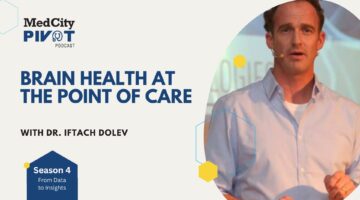
My friend Ben Stecher was diagnosed with Parkinson’s 12 years ago, at the age of 29. A Parkinson’s diagnosis at any age is a shock, and for young-onset patients like Ben, it can beggar belief. Like too many Parkinson’s patients, Ben was mostly left to figure out things on his own following diagnosis. Fortunately for everyone in the Parkinson’s community, Ben’s journey has led to a singular career in advocacy for Parkinson’s patients around care and research.
While there has been progress in understanding Parkinson’s disease in the past decade, Ben will be among the first to highlight how little of this progress has translated into actual improvement in care for Parkinson’s patients. This lack of progress is now combined with a demographic tsunami of an aging population (age is the dominant risk factor for Parkinson’s) to create a serious strain on our healthcare system, especially for seniors. This is the context behind the National Plan to End Parkinson’s Act, and why it is essential to ensure this legislation is implemented with urgency.
At its core, the End Parkinson’s Act directs Health and Human Services, the Veterans Administration, and other government agencies to prioritize more spending on the early stages of Parkinson’s, including diagnosis and improved care and treatment coordination. The amount of money at stake is significant: more than 70% of all dollars spent on Parkinson’s in the U.S. flow directly from the federal government through Medicare and other agencies, totaling more than $20 billion annually. Right now, we mostly spend this money on emergency room visits when patients fall or pass out uncontrolled symptoms, or on end-of-life care in skilled nursing facilities. This fundamentally optimistic legislation envisions a future where Parkinson’s is identified early, where careful care and lifestyle management are employed to lower risk and slow disease progression, and where precision medicine approaches guide patients to the right therapy at the right time.
From a technology perspective, the timing for this legislation is perfect. Because of the 21st Century Cures Act, health data is relatively transparent and portable for the first time. Clinical-grade biomarker data for Parkinson’s is widely available via smartphones and commercial wearables. Finally, AI tools are sophisticated enough to help patients and clinicians make sense of what all this data means to them. Considering we are facing an ongoing shortage of specialists trained to treat Parkinson’s, getting maximum leverage out of this new technology will be essential to achieving the goals of the End Parkinson’s Act. Medicare, the Veterans Administration, and other stakeholders will need to figure out mechanisms to get this technology into the hands of patients at the earliest stages of the disease. Access issues will be some of the most difficult to solve, yet we will need to reach patients who do not have access to specialists, who live in rural areas, and who are members of historically underserved communities.
The bi-partisan passage during an election year of the End Parkinson’s Act shows that addressing a healthcare crisis, especially in our senior population, may be one of the few remaining issues that transcend party lines. With this legislation signed, agency representatives and external advocates from patient, non-profit, and clinical communities will now come together in a committee to formalize specific steps to be taken.
Let’s join together and make sure this committee is well-informed and empowered to take action so that Ben and the other one million plus people living with Parkinson’s in the U.S. don’t have to wait another 12 years to see meaningful improvement in their care.
Photo: Mandel Ngan, AFP/Getty Images

The Power of One: Redefining Healthcare with an AI-Driven Unified Platform
In a landscape where complexity has long been the norm, the power of one lies not just in unification, but in intelligence and automation.
Brian Pepin is CEO of Rune Labs, a precision neurology company supporting care delivery and therapy development for Parkinson’s patients through the utilization of StrivePD, an AI-powered disease management tool.
This post appears through the MedCity Influencers program. Anyone can publish their perspective on business and innovation in healthcare on MedCity News through MedCity Influencers. Click here to find out how.








